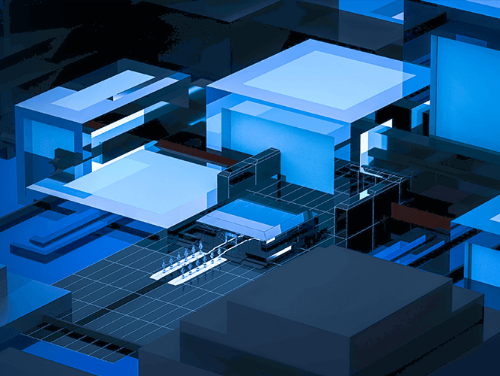Recently, Zhu Jun, General Manager of Minivision Sales, received an exclusive interview with authoritative media outlets in the security industry. Zhu Jun deeply analyzed the existing pain points in the construction of smart communities, and interpreted the trends in the development direction of smart communities such as refined community management and comprehensive service operation.

Pain points in the construction of smart communities
Smart communities have developed for many years and have gone through a transformation from the early community O2O concept to the smart security community of the public security prevention and control system, and then to the concept of intelligent communities for comprehensive social governance. However, at the current stage of development, there are still many pain points in the construction process of smart communities.
According to Zhu Jun, General Manager of Minivision Sales, the pain points of smart communities currently mainly focus on several aspects:
1. Emphasize construction over operation
There are many participants in the construction of smart communities, and in the early stage, they mainly focused on the deployment of infrastructure and hardware. Due to different enterprises participating in the construction, management platforms for property management and community grid management are often not interconnected, resulting in the inability of the smart community system to truly play the role of efficient operation and maintenance management.
2. High investment, low output
Whether it is property management or government managers or resident users, their understanding of smart communities has not reached a certain level or fully explored the application value of smart community systems, resulting in a gap of high investment and low output even if the smart community system is relatively well constructed.
3. Different standards and uneven pace of regional development
Because smart communities are a systematic project, although there are many participants and the development time is not short, so far, there is still a lack of unified leading enterprises in the field of smart communities, and there is still no unified construction standard for smart community construction nationwide, with uneven development steps in different regions.
Smart communities themselves are a field of regionalization, customization, and highly fragmented demand, especially in the development of smart community AIoT solutions. This industry characteristic greatly increases the difficulty of replicability of smart community AIoT solutions, which can be described as a set of solutions for each district. As a result, smart community construction can easily fall into situations where investment costs are high and output does not meet expectations. "Zhu Jun added.
Middle desk service empowers refined community management
On the one hand, it is necessary to face the common challenges of property management, service, and security in the application needs of smart communities at present. On the other hand, it is also necessary to balance the investment costs and output benefits of smart community construction. These are unavoidable challenges for smart community AIoT solution providers.
How to solve these problems? Zhu Jun stated that Xiaoshi Technology has built an ADAMS (AI+Device+AIoT Application Service Platform+Solution) architecture system based on this, which includes algorithms, intelligent hardware, platforms, and solutions, adopting a platform+ecological expansion approach. At the algorithmic level, Minivision fully explores the application needs of segmented scenarios around the three dimensions of community governance, community safety, and community services. It has released more than 20 original algorithms for various scenarios in the community management process, including event analysis algorithms such as high-altitude objects, electric vehicles entering elevators, and walking dogs without ropes, which are currently hot topics in society. These AI services have been successfully implemented and applied in multiple smart community projects, helping to reduce costs and increase efficiency in community property management through practical services.
In terms of platform, Minivision's AIoT application service platform plays a core role, with considerable basic service capabilities and standard functional applications. Each level can be split according to different demands, which can solve 50% -70% of basic problems. The remaining customized parts can be proposed in different application solutions at the application layer or cooperate with ecological partners to achieve a win-win situation for multiple parties. In short, in the face of a complex and demanding smart community, Minivision's AIoT application service platform is like a hexagonal Rubik's Cube, logical and deformable. In millions of disassembly combinations, it can always give you a complete pattern, "said Zhu Jun metaphorically.
At the same time, Minivision has also launched a full stack visual center platform for smart community applications, which includes IoT center, AI capability center, and big data center, enabling upward empowerment and downward linkage. Through the IoT platform, various intelligent perception terminals can be connected to build a community wide perception system, and on this basis, the community environment can be "digitized"; Then, intelligent analysis, classification, storage, and aggregation of data are carried out through community full stack visual algorithms; At the same time, based on business logic settings, data is predicted and predicted, and ultimately, community properties can perform collaborative linkage of "people, machines, and things" through the smart community management platform, achieving visualization and big dataization of property management, improving the precision and efficiency of community management.
In this way, facing the significant characteristics of regionalization, customization, and highly fragmented demand in smart communities, the ADAMS architecture system can not only fully meet the practical application needs of refined community governance, but also ensure the efficient promotion of projects from the perspective of engineering implementation, effectively solving multiple pain points in the current construction of smart communities.
Smart communities will move towards the stage of comprehensive service operation
With the gradual introduction of opinions on the construction of smart communities in multiple regions, the macro construction concepts surrounding smart communities are also gradually being implemented. As a micro unit of a smart city, a smart community is a systematic project. Regardless of the size of the community, its system architecture generally includes infrastructure, management platforms, and various applications at the end.
Minivision has been implemented in the construction of a smart community project in a certain district/county in Jiangsu Province, which comprehensively intelligentizes nearly 1000 communities in the entire area and serves nearly 3 million people. The project is based on "9 front-end intelligent systems, 1 data storage center, and 3 types of intelligent application platforms", and constructs a smart community system that integrates security, governance, and benefits the people. This project is a benchmark case with a large scale and strong demonstration in the field of smart communities across the country.
In addition to public facilities such as water, electricity, gas, network, and communication, the construction of intelligent infrastructure such as intelligent security, intelligent fire protection, intelligent sanitation, and smart home remains the focus of smart community construction in China at present; The management platform includes application support capabilities such as various databases, data services, and permission management; In terms of end applications, it mainly includes community service applications and community management applications to meet the different needs of the government, property management, and residents.
In August 2020, the Ministry of Housing and Urban Rural Development released the national standard "Smart City Buildings and Residential Areas Part 1: Smart Community Construction Specifications" (draft for soliciting opinions). The standards set corresponding standards and requirements for the construction of smart community systems, including infrastructure, comprehensive service platforms, community applications, community governance and public services, safety and operation and maintenance guarantees.
When it comes to the construction direction of smart communities in the current and future years, Zhu Jun said, "Originally, the construction of smart communities mainly focused on the construction of infrastructure such as security and technical defense. After this part of construction is completed, the focus of future smart community construction will extend towards the application needs of comprehensive service operation, government service operation, government service, and community service within the community
From infrastructure construction to community operation services, the construction of smart communities still has a long way to go.
Regarding the key development path and timeline, Zhu Jun judged that:
In the first stage, nationwide, the first and second tier developed areas will focus on the construction of smart communities, and the infrastructure part will be fully completed by 2022. These basic parts mainly include the control of entrances and exits for vehicles and pedestrians, community security systems, and the infrastructure construction of community fire and sanitation systems. The underdeveloped areas are expected to complete this part of the construction before 2025.
For the second stage, after the comprehensive completion of the smart community infrastructure construction, the smart community will continue to extend and expand to the higher-level street level management platform. With the driving force of cutting-edge concepts such as the Internet of Things and digital transformation, the government hopes to integrate communities, streets, and public places into a large-scale urban level IoT platform. Based on this development trend, the construction of smart communities in the future will also be a process of full integration, ultimately achieving the joint formation of the Internet of Things complex by family IoT, community IoT, and urban IoT.
At present, Minivision, with ADAMS as its core, has launched comprehensive construction of smart communities in East China represented by Jiangsu, Southwest China represented by Chongqing, and Northeast China represented by Shenyang. In the future, Minivision will take these three places as the center, continuously expand the construction radius, and work with partners to create a new ecosystem of domestic smart communities.










